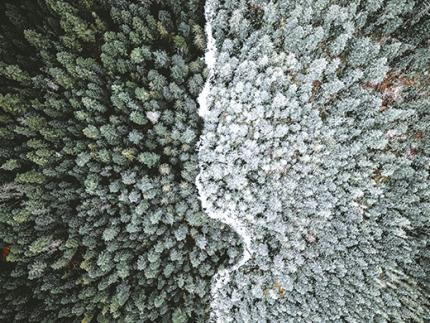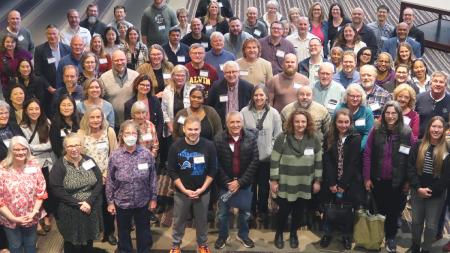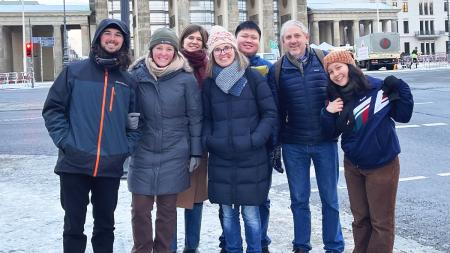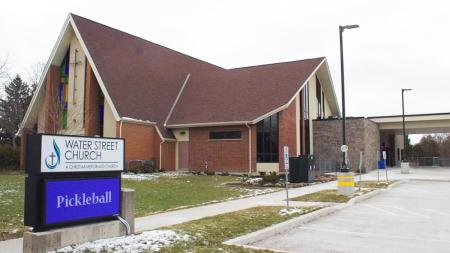Seeking Understanding with the Wet’suwet’en

Unsplash
Every piece of land that houses a Christian Reformed church building is on the ancestral land of Indigenous peoples. How should our congregations today recognize that reality and build relationships with Indigenous neighbors? What about when current events are bringing Indigenous issues to the forefront of our attention? How should churches respond?
These are some of the real questions that congregations in Canada have been facing. In northern British Columbia (B.C.), for example, several CRC churches are located on or near the traditional territory of Wet’suwet’en peoples. These churches also have relationships with Wet’suwet’en people and other Indigenous peoples in the area.
Over the past few months, there has been great controversy concerning a multibillion dollar pipeline project that would bring natural gas through traditional Wet’suwet’en territory.
Under a 1997 Supreme Court of Canada decision, and under Wet'suwet'en law, hereditary chiefs have authority over territory of the planned pipeline path. Hereditary chiefs have not given their consent to pipeline development for a variety of complex and deep concerns around social, environmental, and ethical impacts of the pipeline.
Adding to the complexity, developers have legal, signed benefit agreements with elected First Nation band councils, who are different from the hereditary chiefs. As a result there is significant internal tension and hurt among Wet’suwet’en people and communities, and there are misconceptions of the situation across Canada.
For the CRC congregations near the pipeline path, the territory and pipeline discussions are not abstract. While opinions vary on the best way to resolve the situation, the current tensions draw these churches and CRCs across Canada toward an urgent opportunity to lean into dialogue and discovery with Indigenous neighbors.
Churches and pastors in the area are working to “navigate this topic in a sensitive manner,” said Jonathan Boone, an educator from Smithers, B.C.
Boone recognizes the danger in taking sides while trying to promote reconciliation. The divisive nature of the ongoing public commentary has created deep hurt within the community, he said.
As Mike Hogeterp, director of the CRC’s Centre for Public Dialogue, noted, “We’re encouraged that churches in the area have existing relationships with Wet’suwet’en people and other Indigenous peoples. These relationships are the foundation of the long walk of mutual respect and healing that characterizes the church being the presence of Christ in the world.”
As part of an ongoing dialogue with local church leaders, Hogeterp and Shannon Perez (Canadian Indigenous Ministry Committee) met with the “northern caucus” of Classis B.C. North-West to help discern some steps in the reconciliation journey.
In this behind-the-scenes discernment, Perez recommended “deep learning of historical and recent events that have led us here.”
Hogeterp “emphasized long-term listening and relationships rather than quick fixes.”
Careful listening, they both stressed, honors the complex reality of relationships and communities as Indigenous peoples, resource sector workers, and police live and worship together in the midst of tensions.
As CRC staff look for ways to best support churches and congregations in this context, there have been clear messages from both the local church and Wet’suwet’en leaders.
“The church needs to lead in reconciliation efforts, and it needs to avoid 'taking sides,’” said Hogeterp.
Perez offered a challenge for church members across the country as they reflect on demonstrations in their own areas, paraphrasing words from Senator Murray Sinclair, a First Nations lawyer who served as chair of the Indian Residential Schools Truth and Reconciliation Commission from 2009 to 2015:
“Are your public and private conversations helping or harming? I would ask and challenge people to see the humanity in this. Try to go beyond mainstream news outlets and try to find a variety of sources, including Indigenous sources, such as Aboriginal Peoples Television Network,” she said.
Boone echoed this sentiment, saying, “Be respectful. Imagine if your family fight was being played out publicly. Would you want others watching? Judging? Advising? Filming? Pray instead for justice, peaceful resolution, and healing.”
As Christians pray for the church in northern B.C., Boone said, “Be especially careful with material and views on social media that deny history, overlook the depth of trauma in Indigenous communities, and provide simple answers.”
As the depths of the issues are explored, there is an ongoing conversation about the best way forward. The local churches will be discerning along with Wet’suwet’en leaders how they can support everyone in the territory.
In this process Perez and Hogeterp “encourage churches around the country to pray for these communities and for the church to have wisdom and humility.”


